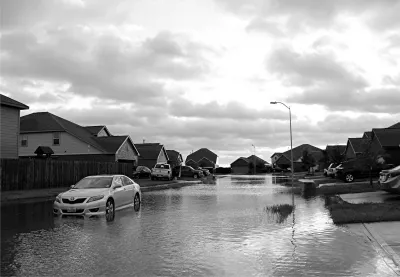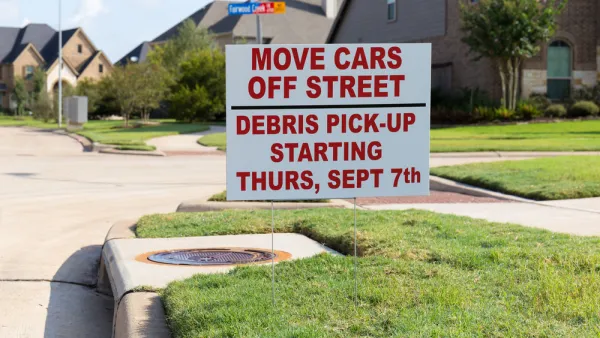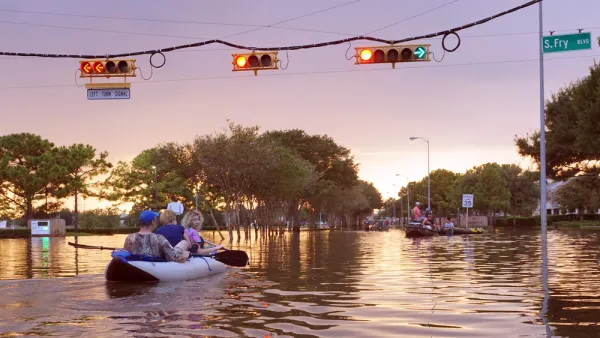Disaster recovery in the Houston area has been inconsistent, with low-income residents of color continuing to struggle to put their lives and communities back together.

Doris Brown and Ben Hirsch report on a research project looking at the experience of Hurricane Harvey survivors and the reasons low-income communities of color have recovered much more slowly than other parts of the Houston area. "Considering the perspectives of poor people and people of color who have lived through natural disasters means we have to discard the understanding that disasters happen at one moment in time and recovery begins immediately."
They point to insufficient government aid and recovery resources as one reason these communities are slow to recover. "Current home repair assistance eligibility standards — which exclude people for having houses in heirship, tax debt, not being able to afford flood insurance and deferred maintenance — are a clear example of how viewing disasters as events that take place at one moment amplifies inequality and the racial wealth gap."
Brown and Hirsch say the research findings also suggest that local evacuation centers in these communities and more investment in disaster preparedness would help with recovery. In addition, cash payments, a streamlined application process, and more funding for community-based groups would help decrease the racial disparities in disaster recovery.
FULL STORY: 5 ways to help take racism out of disaster recovery

National Parks Layoffs Will Cause Communities to Lose Billions
Thousands of essential park workers were laid off this week, just before the busy spring break season.

Retro-silient?: America’s First “Eco-burb,” The Woodlands Turns 50
A master-planned community north of Houston offers lessons on green infrastructure and resilient design, but falls short of its founder’s lofty affordability and walkability goals.

Delivering for America Plan Will Downgrade Mail Service in at Least 49.5 Percent of Zip Codes
Republican and Democrat lawmakers criticize the plan for its disproportionate negative impact on rural communities.

Test News Post 1
This is a summary

Test News Headline 46
Test for the image on the front page.

Balancing Bombs and Butterflies: How the National Guard Protects a Rare Species
The National Guard at Fort Indiantown Gap uses GIS technology and land management strategies to balance military training with conservation efforts, ensuring the survival of the rare eastern regal fritillary butterfly.
Urban Design for Planners 1: Software Tools
This six-course series explores essential urban design concepts using open source software and equips planners with the tools they need to participate fully in the urban design process.
Planning for Universal Design
Learn the tools for implementing Universal Design in planning regulations.
EMC Planning Group, Inc.
Planetizen
Planetizen
Mpact (formerly Rail~Volution)
Great Falls Development Authority, Inc.
HUDs Office of Policy Development and Research
NYU Wagner Graduate School of Public Service





























